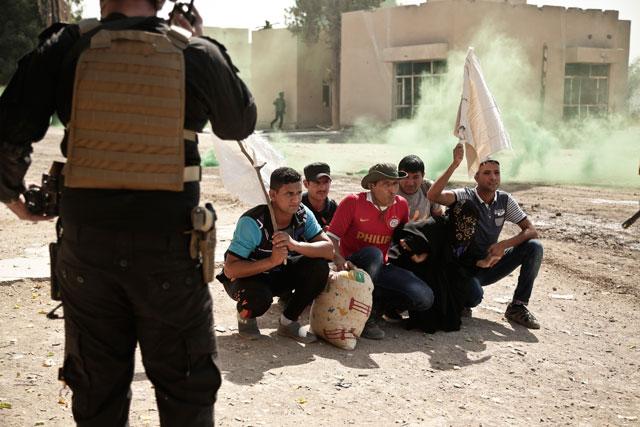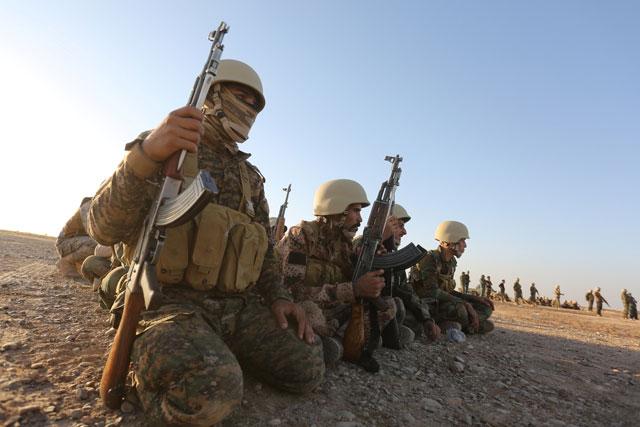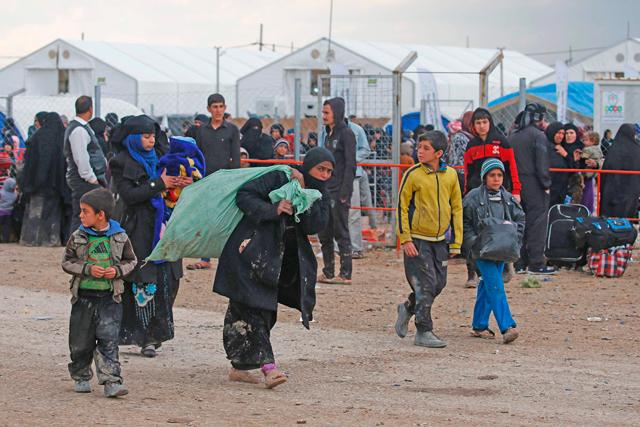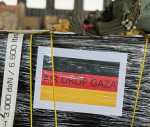You are here
Need to avoid civilian deaths weighs on minds of US forces in Mosul battle
By Reuters - Mar 18,2017 - Last updated at Mar 18,2017
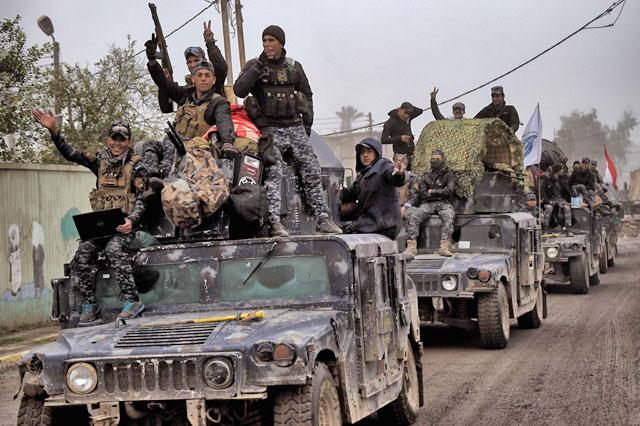
Members of the Iraqi forces celebrate as they drive their Humvees in the streets of west Mosul on Friday as they advance in the offensive against the Daesh group militants (AFP photo)
QAYYARA WEST AIRFIELD, Iraq — As the battle for Mosul moves to the narrow streets and densely packed houses of the Old City, US artillery gunners and helicopter pilots supporting Iraqi forces face an age-old problem — how to avoid killing civilians.
They place their faith in precision missiles which can hit their target with great accuracy. But human instinct also comes into play against a Daesh terror group enemy which has used civilians as human shields and hides in houses and mosques.
“Our mission is to find and destroy ISIS [Daesh]. We are not here to kill the wrong people,” said Captain Lucas Gebhart, commander of the 4/6th Cavalry’s Bravo Troop of Apache attack helicopters.
The troop is based at this airfield about 60km south of Mosul, as is a rocket battery which fires into west Mosul.
A major site at the height of the US occupation, Daesh captured Qayyara from Iraqi government forces in 2014 and destroyed it. The Iraqis retook it in July last year, and now the US army is building it up again as a support base for the Mosul operation.
Gebhart, who wore a US Cavalry hat with a crossed-sabre insignia along with his regular uniform, has been here since December. The troop flies close support for the Iraqi army and escorts medical evacuations. It has had more than 200 engagements with Daesh militants in that time, he said.
“We fly every day, weather permitting. We are firing missiles most of the time,” Gebhart told reporters.
The Iraqi army started its offensive on Mosul, Daesh’s last stronghold in Iraq, in October and retook the east side of the city, bisected by the Tigris River, in January. The west, including the Old City, is much harder going.
“The west side is very congested and it will present new challenges for us. We realise the need to be careful as we go forward,” Gebhart said.
One of those challenges is avoiding civilian casualties in a conflict where fighters are mixed in among the population and sometimes hiding behind them.
“Everyone that flies with me are fathers and husbands, so we are very deliberate to avoid casualties we don’t want. We use guided missiles. The things we shoot from an Apache, they go where we want them to go,” Gebhart said.
Targets are identified and approved by the Iraqi army. But circumstances can change in a moment.
“I have personal experience of human shields. I engaged a target and they pulled a family of women and children out of a house. The missile was already in the air but I was able to move it,” he said.
“You’ve got a little bit of time. If something happens post-missile release, we have procedures to move it.”
Gebhart, aged 32, joined the military as a teenager after the 9/11 attacks on the United States. He served in the 82nd Airborne in Iraq in 2003 before going to West Point and becoming a cavalry officer. He also served two tours of duty in Afghanistan.
“I love my job. I don’t lose sleep over it,” he said.
In another section of the base, the 18th Field Artillery “Odin” battery operates a High-Mobility Artillery Rocket System, fired off the back of trucks.
On Friday afternoon, the battery fired 10 rockets, each worth about $100,000, in the space of about 20 minutes. They headed skywards in a cloud of white smoke and a flash of fire as a Bob Marley song played from a platoon tent. They would reach their target in east Mosul in about a minute.
On Tuesday, a prominent Iraqi politician and businessman, Khamis Khanjar, said at least 3,500 civilians have been killed in west Mosul since the offensive closed in on it.
Related Articles
WARDAK, Iraq — Kurdish peshmerga forces launched a fresh attack on Daesh militants early on Sunday as part of a campaign to capture Mosul, t
TIKRIT, Iraq — Iraqi forces backed by air strikes from the US-led coalition gained complete control of the northern district of Shirqat on T
QAYYARA WEST AIRFIELD, Iraq — President Donald Trump’s son-in-law Jared Kushner travelled with the top US general to an Iraqi base 16km from


